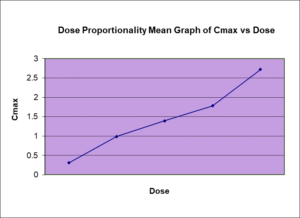ANDA or 505(b)(2): Choosing the Right Approval Pathway for Your Drug

505(b)(2) pathway approvals have experienced double-digit growth recently. Many drug companies are electing to pursue 505(b)(2) applications to obtain a new drug approval (NDA). For developers seeking to obtain approval for previously approved drug products in the United States, FDA offers two abbreviated approval pathways – an abbreviated new drug application (ANDA) for generic drugs and a new drug application (NDA) described in section 505(b)(2) of the Act.
Both ANDA and 505(b)(2) applications rely on the agency’s finding of safety and effectiveness for a listed drug, but the data needed may differ. This blog will go over the two pathway and provide insight on which pathway is more suitable for your drug pipeline.
1. Differences Between ANDAs and 505(b)(2) Pathways
The 505(b)(2) pathway and ANDA are two different regulatory pathways for the approval of drugs in the United States. Below are the key differences between them:
Objective: 505(b)(2) pathway is designed to facilitate the development and approval of new drugs that leverage existing FDA-approved drugs or prolong the life of a new chemical entity(NCE). 505(b)(2) pathway allows for modifications or improvements to existing drugs, such as changes in dosage forms, strengths, or routes of administration which mostly rely on some pre-clinical and clinical data from the already approved drug. Sponsors are obligated to provide evidence of a drug’s efficacy and safety, yet the pathway allows leveraging existing efficacy data from previously approved drugs , alongside additional safety data to assess the modifications made to the drug.
On the other hand, ANDA regulatory pathway is designed to streamline the approval process for generic drugs, ensuring that they are safe, effective, and therapeutically equivalent to the Reference Listed Drug (RLD).
Guidance to follow: In 2019, the FDA finalized guidance to help determine whether an ANDA or a 505(b)(2) application is more appropriate for a drug. This guidance, Determining Whether to Submit an ANDA or 505(b)(2) Application, includes a revised section on scientific considerations for ANDAs and 505(b)(2) applications. The most updated FDA guides about the 505(b)(2) pathway can be found in the document titled Guidance for Industry: Applications Covered by Section 505(b)(2).
For ANDA, FDA provide guidance entitled “Bioequivalence Studies With Pharmacokinetic Endpoints for Drugs Submitted Under an ANDA” and product specific guidance to follow.
Reference product: A 505(b)(2) pathway is a new drug application that “contains full reports of investigations of safety and effectiveness where at least some of the information required for approval comes from studies not conducted by or for the applicant and for which the applicant has not obtained a right of reference or use.”. These applications can rely on data for one listed drug, only to the extent that the proposed product shares key characteristics with that listed drug. Following that, applicant must be able to demonstrate scientific justification for the selection of the listed drug, and to which extent that the investigational product can adopt/not adopt the available data of the listed drug. The clinical trials plan also must be design based on the lacking information of the listed drug or new concern due to the differences between the listed drug(s) and the target drug.
For ANDAs, applicants must chose the RLD defined by agencies and demonstrate that the generic drug is bioequivalent to the RLD. The drug must have the same active ingredient(s), conditions of use, route of administration, dosage form, strength, labeling, etc.
Study requirement: As discussed about, the total study required for 505(b)(2) could be far fewer than a development studies. At the minimum, a pharmacokinetic (PK) bridging study can investigate either the new formulation or new route of administration compared to the approved product and establish bioequivalence. Some critical and potential studies (e.g., fasting, food effect, steady states, alcohol dose-dumping, drug-drug interaction, dose proportionality, age and gender effect, special population (hepatic/renal impairment), chronopharmcology, TQT, HAL/HAP, phase III clinical trials etc.) are needed based on the product property and clinical safety data from listed drugs. Developers should carefully consider regulatory guidance and consult with regulatory authorities to determine the appropriate study conditions for their specific drug product.
For ANDA, FDA provides general guidance and product specific guidance to follow.
2. Seeking regulatory guidance for the 505(b)(2) pathway
Determining the appropriate submission pathway requires an thorough understanding of the available options and type of necessary data for each application. More importantly, the decision must harmonize with the company product development strategy.
It’s critical to note that 505(b)(2) pathway is not an alternative submission for an inequivalence drug product, i.e., the proposed drug product is a duplicate of a listed drug but is unintentionally less bioavailable and fails to demonstrate bioequivalence to the listed drug.
505(b)(2) applicants are advised to contact the appropriate review division at the Office of New Drugs. A pre-investigational new drug (pre-IND) meeting can be extremly valuable in planning a 505(b)(2) application. The purpose of the pre-IND meeting is to review data from existing studies with the FDA and identify the gaps that are needed for NDA approval.
ANDA applicants with questions should contact the Office of Generic Drugs (OGD) for controlled corespence or pre-ANDA meeting.
3. Case study
The CIP-Tramadol ER capsule submission is a typical example for 505(b)(2) pathway instead of ANDA. The first tramadol product approved by FDA is Ultram (NDA220-281,March 3, 1995), an immediate-release tablet indication for moderate to moderately severe pain in adults with recommended dose of 1 tablet (= 50 mg) or 2 tablets (= 100 mg) every 4 or 6 hours as needed. The only extended-release tramadol product currently approved at the time of submission of NDA 21-692 is Ultram® which is a tablet and a pharmaceutical alternative, there is no approved pharmaceutical equivalent to tramadol ER capsules. Both CIP tramadol ER capsules (NDA 22-370) and Ultram® ER tablets (NDA 21-692) have identical strengths of 100, 200, and 300 mg and are meant for once daily dosing. As such, a 505 (b)(2) submission for CIP-Tramadol ER capsules relying on Ultram® ER Tablets through acceptable bioequivalence data is permissible.
Based on FDA Pre-NDA meeting and review, a number of Clinical Pharmacology items were performed as below:
-
- Extended release characteristics (single dose fasting study).
- Dose proportionality
- The drug product’s steady-state performance relative to a currently marketed IR product under fasting conditions
- Effect of food on the formulation
- Effect of alcohol on the formulation
The applicant did not need to perform any special population or drug interaction studies which rely on the FDA’s previous findings for Ultram to inform their labeling as Ultram label addresses many special populations, information on drug interactions with tramadol is available from the approved tramadol products and literature.
In summary, for CIP-Tramadol ER capsules, the 505(b)(2) pathway was performed for NDA eligibility, this case study demonstrates that the difference of 505(b)(2) and ANDA depends on the naturalness of the product and the clinical data from the approved drugs.
Why Choose BioPharma Services for your next drug development project.
BioPharma’s Pharmacometrics team has extensive experience developing a 505(b)(2) product clinical development plan using the bridging PK/PD study approach. BioPharma also provides advice related to safety and efficacy assessments, and the variety of clinical trials necessary for the 505(b)(2) pathway.
Whether you need a study to establish a new indication for a small molecule or investigate a novel route of delivery for a previously approved drug, BioPharma can provide the services you need and guide you through the appropriate regulatory pathways.
BioPharma has extensive experience conducting clinical pharmacokinetic studies as a part of 505(b)(2) submissions. The results of these studies may serve as the bridge study for pharmacokinetic response and therapeutic efficacy for your drug.
Common bridging studies in 505(b)(2) program can include:
- Comparing the bioavailability of an existing pharmaceutical moiety with the new product(s)
- Steady-state comparative pharmacokinetics assessment
- Dose proportionality (if multiple strengths developed)
- The effect of food
- The impact of gender and age
- Presence of active metabolite(s)
- Drug-Drug interaction
- Special population( hepatic/renal impairment)
- Alcohol dose-dumping
- Chronopharmacology
- Potential HAL/HAP (Human Abuse Liability /Human Abuse Potential)
Written by: David Yu, Sunny Le, Juan He, and Dr. John Oldenhof.



